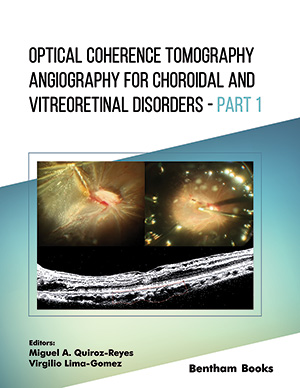Abstract
Diabetic macular edema uses structural features as biomarkers and
predictors of treatment response. Optical coherence tomography angiography (OCTA)
metrics found a correlation between many structural biomarkers and reduced vessel
density. We present recent references of vessel length density, vessel area density, and
foveal avascular zone metrics in eyes with diabetic macular edema and comment on the
associations found between them and structural biomarkers. Diabetic macular edema
can change the level at which the capillary plexuses are located, with retinal cysts
altering the strength signal. Though image evaluation requires adjustment, intra-subject
comparison before and after treatment can be a useful tool to note changes in vessel
perfusion, combined with structural changes, to assess treatment outcomes. Macular
ischemia is a variable that can be identified reliably with OCTA and can be detected in
different capillary plexuses. For eyes with retinal thickening, OCTA evaluation
requires consistency to avoid inter-device variability. It is recommended to use the
same device, the same scanning protocol, and preferably the same software, to obtain
more reproducible measurements.
Keywords: Area, Deep capillary plexus, Diabetic macular edema, Foveal avascular zone, Middle capillary plexus, Perimeter, Superficial capillary plexus, Vessel area density, Vessel length density.






















